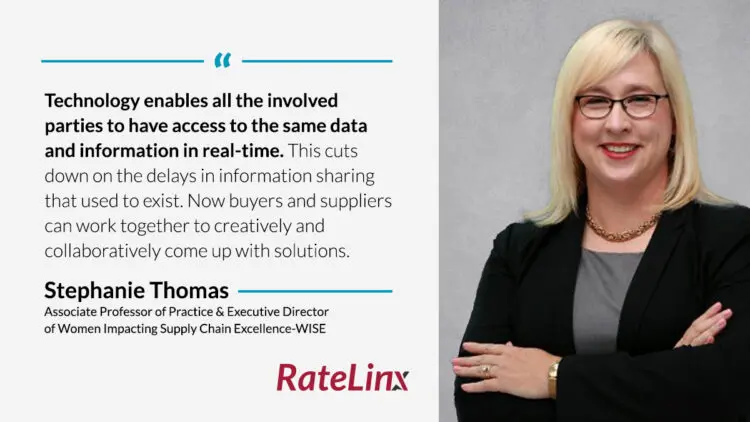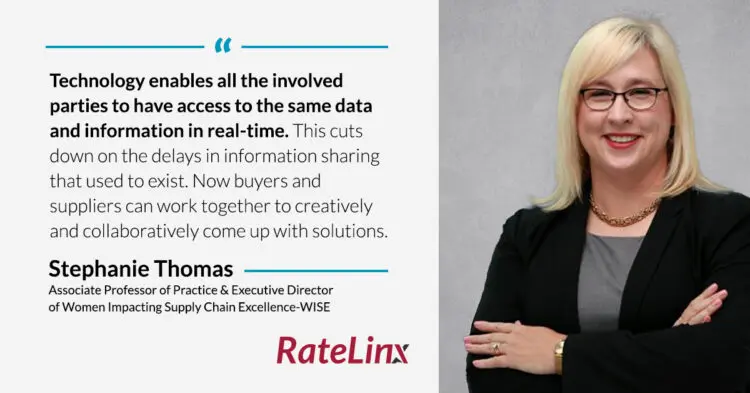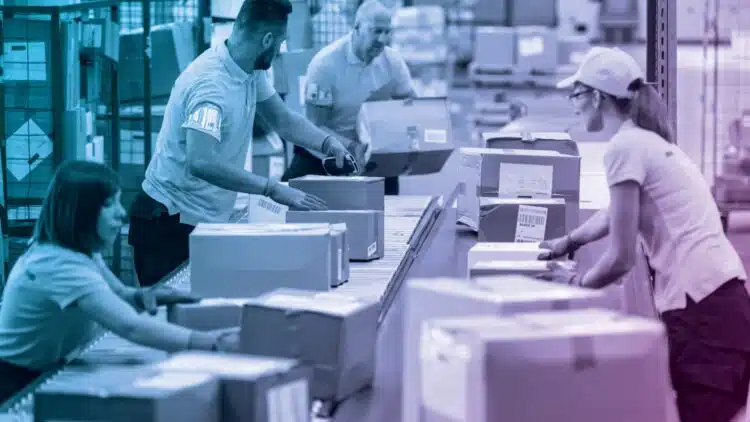Think back to when you were first learning supply chain management – maybe all the way back to college. How many of the supply chain leadership tips, best practices, and theories you learned will apply in a post-pandemic world?
For that matter, think back to January 2019. How much has your perception of supply chain management changed since then? It’s definitely been an accelerated course of study for all of us. And we don’t even get a textbook or lecture notes to help on the final exam.
Featured Expert

Stephanie Thomas
Stephanie Thomas is the clinical assistant professor in the Department of Supply Chain Management and the Executive Director of WISE (Women Impacting Supply Chain Excellence). She earned her Ph.D. in Logistics/Supply Chain Management with a marketing support area from Georgia Southern University and a B.A. and M.B.A. from the University of Tennessee. Prior to coming to the University of Arkansas, she was an assistant professor at Texas Tech University. Stephanie enjoys incorporating her previous work experience with Lowe’s Companies, IBM, and Stanley Tools in her class discussions. She was also recently named one of the Top 100 Most Influential Women in Supply Chain by B2G Consulting.
Recommended Reading:
Thankfully, we have professor Stephanie Thomas, Associate Professor of Practice, and Executive Director of WISE, at the University of Arkansas. She’s been developing tomorrow’s supply chain leaders — teaching everywhere from Texas Tech University to Georgia Southern University — for well over a decade.
Here are highlights from our recent interview on the future of supply chain and supply chain leadership tips in a post-pandemic world:
1. How can supply chain leaders best use technology to navigate the post-pandemic environment?
That’s a great question without a simple answer. The question most companies I’ve been interacting with lately are trying to answer is: What are going to be the lasting post-pandemic changes? Until there’s more clarity around that, it’s difficult to say how technology is best going to be able to be used. Will there be a continued focus specifically on availability versus assortment depth? Are channel shifting behaviors here to stay or will they revert (i.e. increases in pickup, delivery, and online) back to brick and mortar store purchases? There are technology implications to all of those.
Companies have access to lots of data now, but it’s not always the right data or there’s so much of it that simplification in order to make decisions and solve problems can be overwhelming.
One thing that’s clear, though: The heavy reliance on solely using history for demand planning and forecasting is changing. And it needs to! Companies have access to lots of data now, but it’s not always the right data. Or there’s so much of it that simplification, in order to make decisions and solve problems, can be overwhelming.
Stephanie offers these supply chain leadership tips—the optimal use of data and technology still needs to involve cross-functional collaboration to make sure the key stakeholders are looking at the same information and on the same page.
Technology enables all the involved parties to have access to the same data and information in real-time. This cuts down on the delays in information sharing that used to exist.
2. You list “buyer-supplier relationships” as a key research focus area. How can supply chain leaders use technology to create more healthy and productive relationships?
My research interests stem from my early years in industry logistics and merchandise buying roles. I loved the relational part of my work. I believe that organizations are trying to crack the code on how to make technology relational.
Technology enables all the involved parties to have access to the same data and information in real-time. As a result, this cuts down on the delays in information sharing that used to exist. Now buyers and suppliers can work together to creatively and collaboratively come up with solutions. Companies shouldn’t use technology as a replacement for healthy supply chain relationships.
Like what you’re reading?
3. What soft skills do you think a successful supply chain manager needs to have?
That’s a great question. While a lot of people might talk about specific technical and analytical skills, I’m going to approach this from a slightly different perspective.
From my standpoint, I see that professionals who are actively involved in various activities are best suited for supply chain management roles. These individuals excel in time management, prioritization, and how to juggle multiple things at once. These skills provide a great foundation for being a leader in supply chain.
I also think there is both an art and a science to supply chain management so people that have a good left brain/right brain balance are well suited for this type of career.
You may also be interested in…
4. Now, on to your work with WISE – How does the current landscape look for women in supply chain management? What advice would you give your peers looking to advance in the field?
More and more women are choosing supply chain management for their early careers. I’m seeing it at the university level. Through my work with WISE (Women Impacting Supply Chain Excellence), I have met female supply chain students from universities across the US, and they are rock stars.
But besides getting students excited about the world of supply chain management, I am also concerned with placement fit. I’ve watched talented young women enter into a supply chain role out of college that wasn’t a good fit and within 1-2 years, they move into another area of business and never come back to SCM. While cross-functional career progression is often a part of a successful supply chain career, having employees actively seek to leave the discipline is a talent loss that we don’t want.
With my work specifically on encouraging women to choose supply chain, I know how critical it is to finding a good fit for that initial role. Joining a company with a strong ERG (employee resource group program) or focus on direct mentorship can also help. Retaining the talent in our field is just as important as getting folks into SCM in the first place.
5. What is one non-supply-chain-centered class you think every supply chain leader should take?
Great question. While I could argue for several different options, I’d go with a basic Finance course. Knowing how to speak the language of business can help make a positive impact on your organization and advance your career.
The Promising Future of Supply Chain Management
Even through the turmoil of the past year, supply chain leaders have shown remarkable resilience and adaptability. Quick adjustments by flexible leaders have kept things running, and even led to new efficiencies and best practices.
The traits that will lead to lasting success, regardless of what 2021 has to bring, are the same traits Stephanie Thomas is helping instill in the next generation. It’s all about smart collaboration, judicious use of technology, and a commitment to ongoing education.
For more insight, check out our recent interview with Rosemary Coates on supply chain resilience.










